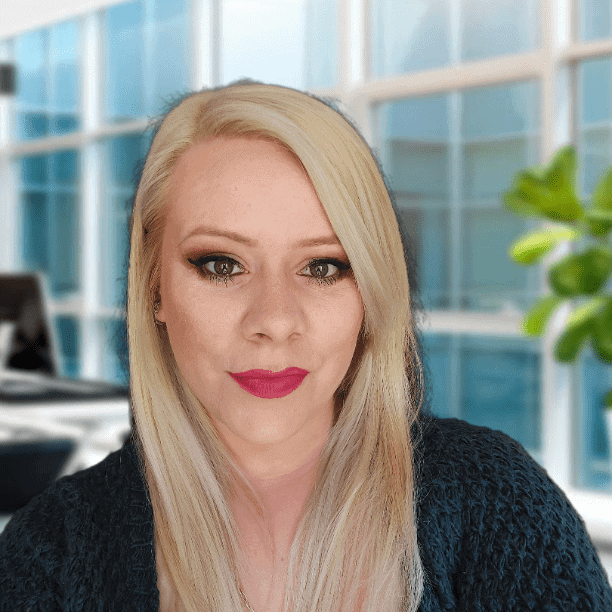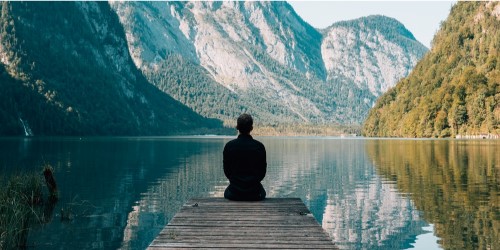
For over three decades, Robert Litman has been quietly yet profoundly reshaping the way we understand the breath—not just as a biological necessity, but as a gateway to deeper embodiment, resilience, and transformation. As founder of The Breathable Body and co-developer of the Wellsprings Practitioner Program with movement visionary Emilie Conrad, Litman stands at a rare intersection of science, somatic inquiry, and ancient wisdom. In this intimate conversation, Mystic Mag explores Litman’s pioneering work with the Buteyko Breathing Technique, his lifelong commitment to restoring natural breathing rhythms, and how breath, movement, and sound can become powerful tools for healing and human potential. Speaking from his home on Vashon Island, WA, Robert offers insights into the intelligence of the body, the often-overlooked science of respiration, and what it means to truly live a “breathable life” in today’s fast-paced world.
You’ve dedicated over three decades to exploring breath, movement, and sound as tools for healing. What initially drew you to this intersection, and how has your understanding evolved over the years?
I was born with a condition where my blood couldn’t carry oxygen properly. So I had a breathing issue from birth. That’s just a bit of background. I initially had a career in advertising, but then I felt called to become a bodyworker.
I studied the Duggan/French Approach to Somatic Pattern Recognition, which is a hands-on approach to movement. breath and health. One of the first things we learned was how to work with a person’s rib cage, lungs, and breathing. As soon as I had my hands on someone’s body and could feel their breath moving through them, I knew—that was it. That was all I wanted to do. I just fell in love with the feeling of breath.
I completed my certification program and became an anatomy and physiology teacher. That gave me the knowledge I needed to teach in more depth. Later, I went to New Zealand to study the Buteyko Breathing Method with Jennifer Stark. I did this because my daughter had severe asthma, and I was looking for something to help her manage it.
I had tried many things, books, diets, various suggestions—but nothing really helped her. Then I attended a lecture about the Buteyko Method and thought, that makes sense. It was based on science, which really appealed to me. I received a grant and spent five weeks in New Zealand working with Jennifer, helping people with asthma and other breathing-related disorders in hospitals across the country.
After about a year of working with her, I earned my certification as a Buteyko Breathing Teacher. I returned to the States and began teaching Buteyko in 2003. At that time, most of my students were seeking help with asthma, and I had a lot of success with them. Over time, more people began coming for issues like sleep disorders, anxiety, and panic.
Many of the people I worked with found relief when they understood why their breathing patterns were contributing to their symptoms. A big part of what the Buteyko Method addresses are hidden hyperventilation—breathing too much air, too frequently. One major cause of that is mouth breathing. So, a lot of the work became helping people transition to nasal breathing and to reduce the volume of air they were taking in throughout the day and night.
My teaching evolved. I started to realize it wasn’t about controlling breath as something separate from the body. Instead, I focused more on helping the body naturally change how it breathes. So, I shifted more into body-based work—helping people find relaxation in their body, because, as Dr. Buteyko said, the key to good breathing is relaxation.
That became my goal: to invite people into a quieter, more relaxed, more settled place within themselves, so their breathing could reflect that. When someone is too on-guard, too fearful or hyper-vigilant about their breath, it creates tension. Over the years, I’ve moved toward working more with the sensations in the body, with people’s thoughts and feelings, and how all of that affects breath.
And my daughter? She no longer has asthma. I also discovered something about myself. As a child, I used to cough myself into breathlessness. When I told Jennifer Stark about my symptoms, she said, “You have cough-variant asthma. You don’t wheeze, but you cough yourself into breathlessness.”
That was a huge moment for me. I grew up in the 1950s, and my father used to say, “It’s all in your head.” That was the attitude back then—that asthma was psychological. But it wasn’t. I was asthmatic, and yes, I had emotional stress and trauma in my childhood, but my symptoms were very real.
Now, I no longer have any symptoms of asthma. And if I ever do get that familiar tight feeling in my breath, I know exactly how to shift my breathing and body to stop the symptoms right away.
People really benefit from this work. What I teach is truly an education. Right now, my classes are once a week for six weeks. I frame it as a course on breathing education—understanding your physiology and anatomy—so that by the time someone finishes, they walk away with a skill they can use for the rest of their life.
And that’s the most important part. I don’t try to “fix” people. I just want them to learn. Once they know what to do, they can work with themselves to make lasting change.
The Breathable Body, which you founded in 2003, has become a cornerstone of your work. What does it truly mean to have a “breathable body,” and how does that differ from simply ‘breathing’?
I love that question because it’s really quite encompassing. I would like to talk about it this way:
When we breathe in, we’re inflating—if you will. We’re bringing air into our body and becoming more buoyant. Our lungs are changing shape. They swell, they enlarge as the breath comes in, and they get smaller as the breath leaves.
We live in a skin, a very finite container. So, if the lungs are moving and getting bigger, that means everything else around them has to move to accommodate that change in shape. The body is in movement when we breathe, both in and out.
When we are tense—if we hold ourselves tight, lift our shoulders, hold our belly in, or squeeze our pelvis—then those parts can’t move as freely when the lungs are trying to expand. They’re met by the resistance of where we’re holding tension. So, the body becomes less breathable. It doesn’t go through the changes it needs to in order to support full respiration. This reduces the lungs’ capacity to receive the air we need.
I like to talk about it in terms of “holding our breath.” We can hold our breath by literally not breathing, or we can hold our breath small by keeping ourselves tense—so our body can’t go through the natural changes that happen when the lungs expand. A breathable body means everything is in movement—when we inhale and when we exhale.
The ability to teach people that reality helps them feel their breath—is powerful. The lungs are the only organ that receives the breath directly, but everything else in the body moves in relationship to the lungs. That movement can be felt all the way down into the bottoms of the feet, up into the crown of the head, and out to the fingers. The breath’s presence is reflected everywhere.
If I can guide people, again referencing Dr. Buteyko’s influence, to relax those tensions, they’ll begin to feel more pleasure in their breathing—because their whole body is engaged in that movement. Breath is meant to be pleasurable.
One of the things that changed for me when I began studying and later teaching Continuum Moving Inquiry was the realization that I wasn’t breathing well. I was holding my breath a lot. And then these words came to me: Breath means me no harm. It was like my body saying, “It’s about time you figured out how to breathe—and what breath is here to do.”
So, in my teaching, I consider myself a guide. But breath itself is the teacher.
There are four key things I love to share with people:
- No two breaths are alike.
Each breath is built on the experience of the last one and reflects our metabolic activity at the moment. That means there’s always an opportunity to be curious: What’s going on in this breath? How am I, the one receiving the breath, different from the last time I breathed?
I like to say that each breath, and all the breaths we’ve ever taken, are the ancestors of the breath we’re breathing now.
- Each breath is a life and a death.
We never really know if we’ll get the next one. When I inhale, it’s like, “Oh—this is my life right now. Wow.” And when I exhale, I feel grateful for the breath I just had. At the bottom of the breath, there’s that question: Will there be another? Then it comes—and I think, “Wow, I’m living in another moment of my life.”
It’s my heart’s desire, I believe, that calls forth the next breath.
I’ve been with people are they are dying. When they don’t get the next breath, life is over.
- Everything comes and goes.
Breath teaches us that nothing stays. Each breath comes in and then goes out. This is a universal law. And I think that has tremendous psychological benefits.
We often tell ourselves things like, “I’m stuck,” or “Nothing changes.” But the truth is—everything does change, breath by breath. If we can feel that rhythm of coming and going, we can change the story we tell ourselves. There are always moments when we’re not thinking the same thoughts over and over again.
At the end of the exhale, all thoughts and images disappear. They go. Nothing stays. Everything comes and goes.
- Breath is sacred.
I learned this from breath itself. When I practice, I ask myself, what do you want me to learn today? I listen carefully, and often breath speaks back to me.
These four lessons—no two breaths are alike, everything comes and goes, each breath is a life and death, and breath is sacred—didn’t come from a book. They came from bringing my awareness to the movement of my breath and body.
There’s something poetic about breath. Something sacred. It’s our life and our death. It’s something to be treated with reverence.
That’s why I authored an article called There’s No Such Thing as Breathwork. Because the origin of the word work is to torture. I don’t like putting “work” behind “breath.” I’m not trying to put breath to work. It’s practice. An inquiry. A discovery. Not something to be worked—but something to be explored, respected, and learned from.
So that’s how I approach it. And I think it’s different from trying to make breath behave a certain way. One of my students told me, “Every time I try to make my breath behave, it feels like a wild stallion is inside me trying to kick its way out of a corral.”
That really stuck with me.
People say, “When I pay attention to my breath, I always feel like I’m doing it wrong.” But it’s not about right or wrong. Breath isn’t about performance, it’s about presence.
What type of services do you offer?
The pandemic changed my teaching quite a bit because I couldn’t teach in person. I started teaching on Zoom. I teach the Buteyko Breathing Education program—It’s eight hours of breathing education and practice over a 6-week period, The focus is learning how to quiet their breathing, regulate their nervous system to a state of calm and help them with their asthma, anxiety, sleep and digestion. In that program, I guide people into paying attention to their body and breath, so they have a sense of knowing what is best for them and their breathing health which affects their overall health.
I see clients privately via zoom or in person here on Vashon Island, Washington.
I enhance their perception of their bodies through sound, breath and small movements. I want them to stop thinking about “taking a breath.” For me, the idea of “taking a breath” is rooted in a capitalistic and colonial mindset—I take. Instead, I much prefer to teach them how to be in a receptive and listening state, so they can receive the next breath and be open to what it delivers.
That’s why I don’t like to think of breath as “work.” I see it as an inquiry to explore—for one’s own well-being.
Right now, now that the pandemic is mostly over (though people still get COVID), I’ve also been through other personal changes. My wife died two years ago. We were together for 38 years, and I spent two years grieving her. During that time, I didn’t feel ready to teach out in the world. But now, I’m teaching in public again.
I’m using my book as a guide. People come to class, and I encourage them to read the book, and we use it as a roadmap. I call it a book study group—working with the material from my book. I teach here where I live. People come to class, and together we explore the exercises and practices from the book.
I spent a couple of years authoring that book. It’s really an accumulation of my 38 years of teaching—reaching far back into my own history, where it all started for me. I became very transparent about my life and how breathing has made a profound difference for both me and my clients.
Your work intricately weaves together respiratory physiology, neuroanatomy, and cellular biology. How do you make these scientific concepts accessible and embodied for your students?
When I was an anatomy and physiology teacher, a couple of things changed for me. First, I’ve always been an avid reader of detective stories, and I’ve also always had a deep interest in biology—I consider myself a biologist. I began teaching anatomy and physiology at a trade school for massage therapists. I wasn’t formally trained in the subject. I was entirely self-taught.
I was teaching six hours a week but studying 30 hours just to stay ahead. The information came easily to me. My wife would come home to find me sitting in the middle of a sea of books, flipping between them, trying to memorize everything. Then, one day, I thought, “Wait a minute. I can’t possibly hold all this information in memory.” But then I had a realization—anatomy and physiology could be approached like a detective story. If I followed the clues, everything started to make sense. This works because that works, and that leads to this. I began to look at the body as a story full of clues.
Having been a movement teacher for years, I took those clues and explored them in my own body. I’d ask myself: How does this work in me? What does it feel like? Then, when I taught, I didn’t teach from rote memory—I taught from experience. I shared what I felt in my own body, and that turned the class into a transmission. My students could feel what I was teaching because I was feeling it too. That’s what made it land for them.
This approach freed me from needing to memorize everything. I could just remember: This is what we’re doing, and I remember how it felt. I once took a class from a man named John Zahourek. He taught a method called Anatomy in Clay®. We used a 2- or 3-foot skeleton and built all 660 muscles on it using modeling clay. It was an eight-day class, and the muscles had to be accurately proportioned—otherwise, you’d end up with a Hulk!
His motto was, “The mind does not forget what the hands have built.” And that’s true. The mind also doesn’t forget what the body has experienced. That’s how learning becomes part of our wisdom
Online, I do something similar. I use a lot of PowerPoint, but I also invite students into exploration. I show them something, then ask: What happens when you place your hands here, or breathe into that area, or make sound in that space? I invite them to move, to sit, to walk—whatever helps them feel it in their own body. That way, the learning isn’t just intellectual—it’s embodied.
The science of respiratory physiology can be harder to teach, it’s complex. I introduce it in the first class, then I review it and revisit it repeatedly, always tying it back to what they’re practicing. I want science to make sense to them, because once it clicks, they’re more motivated to learn the breathing practices. If science doesn’t make sense, there’s no value in it for them.
Then there’s the psychology of it—the psychophysiology. I’m not a psychologist, but I help students notice behavioral patterns. For example, I ask them to make a list: When do you notice that you breathe through your mouth instead of your nose? They might write, “When I eat, when I shower, when I do email, when I walk.” Once they become aware of those patterns, they can begin to shift them. Oh, I’m about to do that thing where I usually breathe through my mouth. Maybe this time, I’ll keep my mouth closed and breathe through my nose instead.
I’m guiding them to pay attention to their behaviors—both breathing behaviors and the emotional and psychological triggers that disrupt their breath. Because how we behave is how our breath behaves. If we’re relaxed, our breath reflects that. If we’re anxious, our breath becomes short, shallow and fast. Breath is always appropriate to behavior. And if our behavior is disrupting our breath, then changing the behavior can help shift the breath—and even the physiology, which over time becomes a habit in itself.
Sometimes we might think, I don’t know why I feel anxious, but our physiology is acting out of a patterned response. Learning how to interrupt those patterns is beneficial.
That’s what I tell my clients: what you experience about your breathing becomes your wisdom about breathing. It’s not about forcing it or making it behave a certain way. It’s about becoming wise—wise in your own body, with your own breath.
You’ve been deeply involved in somatic education and pattern recognition. How can understanding one’s movement patterns lead to breakthroughs in breath and overall well-being?
My work in somatic pattern recognition has shown me that certain postures support healthy breathing—and most of them begin with having a straight spine. It becomes easy to see how posture affects breath. For example, if someone’s head is jutting forward, they’re collapsing their rib cage and windpipe. If they’re hunched over, their diaphragm gets compressed into the stomach, making it difficult to breathe well. If their shoulders are raised or they’re leaning to one side, that also affects breathing.
I can observe how someone moves through space and see if they’re defended, holding tension, or moving freely. Each of those movement patterns impacts how they breathe. So, when I notice a pattern that inhibits breath, I work with their movement to help free it up.
One of the most helpful things I learned was from Jennifer Stark. She taught a position called the horse rider pose. It’s simple but powerful. You move to the edge of your chair so you’re sitting only on your sit bones, with your feet slightly wider than shoulder-width apart and flat on the floor in front of you. Your hands rest either on your thighs or by your sides. This automatically encourages an upright posture—without needing to “sit up straight” forcefully.
Then, when you exhale, you allow the weight of your body to settle back into the chair. You’re paying attention to gravity, letting it invite you back down to the Earth. You feel your feet on the floor. And when you inhale, you keep that connection in mind—your sit bones on the chair, your feet grounded—and breathe from lower down, naturally activating the diaphragm. Instead of lifting up to breathe, you’re allowing it to expand without extra muscular effort.
There are a few other simple tips. One is tongue position: the tip of your tongue should gently rest against the roof of your mouth, right behind your front teeth—not at the bottom of your mouth. Your lips are softly sealed, and your teeth are just a few millimeters apart. That creates more space in your face, relaxing the jaw and the body.
Another thing I like to teach is this: think of breath as a touch. When you feel breath entering through your nose, you’re being touched by breath. When your body moves with breath and you feel the movement as touch, it immediately shifts your state. It slows you down, doesn’t it? It brings you into the moment.
That shift happens because now you’re using your senses to experience breathing—not your mind. You become present. Breath is presence, and when you pay attention to the presence of breath, you become present too.
There’s one more piece I’d love to offer. This comes from yoga, going back about 5,000 years. You can use the syllables “Sa” and “Ha” as internal cues. As you inhale, think the syllable Sa. As you exhale, think the syllable, Ha. You don’t have to say it out loud—just think it.
You might notice more space opening in the chest, as if the lungs are drawing air in naturally, rather than you forcing air in through effort. Try placing your hands on your chest as you think Sa on the inhale—you’ll feel your chest gently expand. But if you try to take a deep breath without that mental cue, you may actually create tension. Why tighten your chest when you’re trying to expand it?
Learning to use “Sa” and “Ha” can be a gateway. Eventually, you won’t need the syllables—you’ll develop muscle memory. Your body will know how to let your lungs breathe you, instead of you trying to breathe your lungs.
You can find out more about my practice and classes and receive the first chapter of my book (The Breathable Body – Transforming Your World and Your Life One Breath at a Time) free through my website: thebreathablebody.com.



